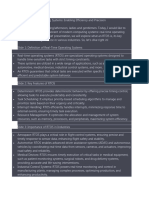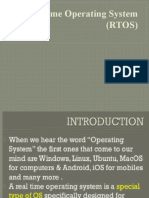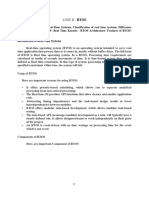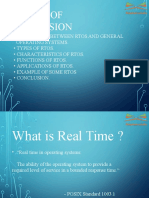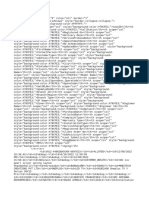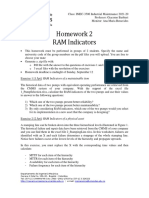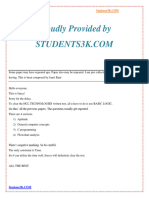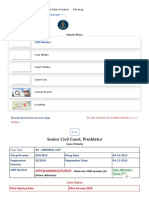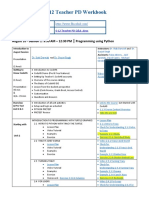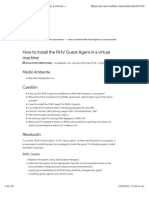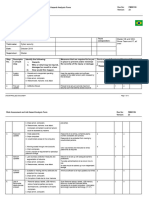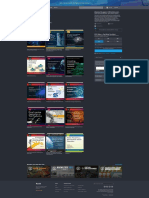0% found this document useful (0 votes)
21 views2 pagesAssignment1 OS
A Real-Time Operating System (RTOS) is designed for tasks requiring strict timing and reliability, making it suitable for embedded systems and critical applications. Key features include deterministic performance, multitasking, minimal jitter, and efficient resource use, with classifications into hard, soft, and firm RTOS based on deadline importance. Popular examples include VxWorks, FreeRTOS, and QNX, with applications spanning aerospace, automotive, medical devices, telecommunications, and industrial automation.
Uploaded by
pranjalpatil0705Copyright
© © All Rights Reserved
We take content rights seriously. If you suspect this is your content, claim it here.
Available Formats
Download as PDF, TXT or read online on Scribd
0% found this document useful (0 votes)
21 views2 pagesAssignment1 OS
A Real-Time Operating System (RTOS) is designed for tasks requiring strict timing and reliability, making it suitable for embedded systems and critical applications. Key features include deterministic performance, multitasking, minimal jitter, and efficient resource use, with classifications into hard, soft, and firm RTOS based on deadline importance. Popular examples include VxWorks, FreeRTOS, and QNX, with applications spanning aerospace, automotive, medical devices, telecommunications, and industrial automation.
Uploaded by
pranjalpatil0705Copyright
© © All Rights Reserved
We take content rights seriously. If you suspect this is your content, claim it here.
Available Formats
Download as PDF, TXT or read online on Scribd
/ 2

